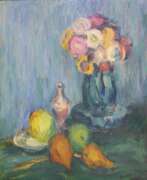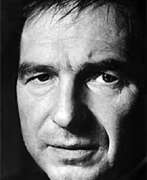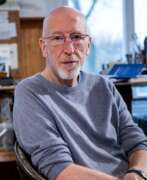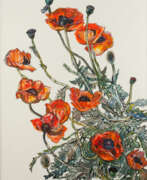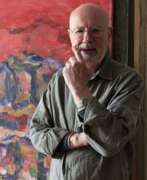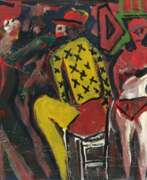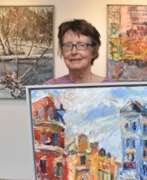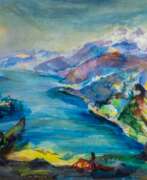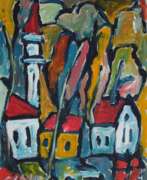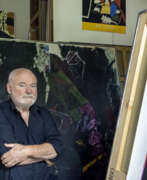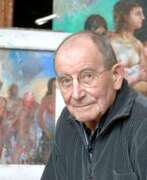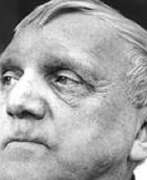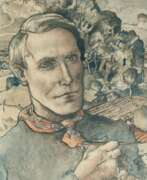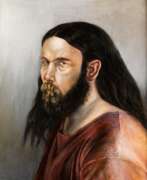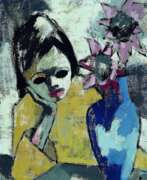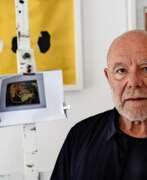Portrait German Expressionism
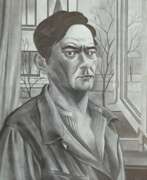

Christian Arnold was a German painter and graphic artist. He is best known for his landscape paintings that often depicted the rural and coastal regions of northern Germany.
Arnold studied at the Academy of Fine Arts in Munich and later taught at the School of Arts and Crafts in Bremen. His work was heavily influenced by the German Expressionist movement, and he often used bold colors and thick brushstrokes to create a sense of emotional intensity in his paintings.
In addition to his landscapes, Arnold also produced numerous portraits, still lifes, and religious works. He worked in a variety of mediums, including oil paints, watercolors, and printmaking.
Arnold's work was exhibited widely during his lifetime, and he received numerous awards and honors for his contributions to the arts. Today, his paintings are held in collections around the world, including the National Gallery in Berlin and the Kunsthalle Bremen.


Herbert Breiter was a German-born Austrian painter and lithographer. He is known, in particular, for his landscape paintings, his "atmospheric scenes" and for the many views of Salzburg, his adopted home city, that he produced. His surviving output also includes still lifes and portraits.
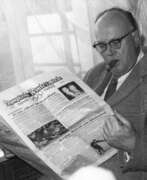

Franz Bronstert was a German engineer and painter. Before World War I Bronstert visited and finished the superior school for engineers in Hagen. He served during the war in the rank of Lieutenant and later „Rittmeister" equivalent to Captain. As a prisoner of war at Ripon, Yorkshire he got into contact with artists Fritz Fuhrken and Georg Philipp Wörlen and started with his own artistic work. These contacts led to the foundation of the group of artists „Der Fels" (The Rock). Past the war he settled in Hagen and made contact with the group around collector Karl Ernst Osthaus especially with Christian Rohlfs. The latter influenced the work of Bronstert considerably. Membership in „Der Fels" led to numerous exhibitions all over Germany and Austria between 1921 and 1927. Bronstert’s art developed from radical expressionism of the early twenties to a realistic phase and finally to a reformed impressionism as the artist claims himself. Bronstert finds his motifs mostly in nature. Even though Bronstert mastered several techniques, like oil painting, drawing, woodcut it was the watercolour painting that he loved most. Bronstert was both a technical and artistic talent. He was successful in his job and was a member of the board of VARTA with several international patents on his record when he retired. Past retirement he concentrated solely on his art again. Works by Bronstert can be found in the Schneider Collection, Museum Baden, Solingen; in the collections of Karl Ernst Osthaus-Museum in Hagen; in the Museum Schloss Moyland, in the Von der Heydt-Museum, Wuppertal, in the Bavarian State Painting Collections, Munich,and in the art museums of Soest, Germany, Iserlohn, and Lüdenscheid as well as in private collections.


Friedrich Karl Gotsch, actually Friedrich Karl Müller, was a German painter and graphic artist.
After a phase of intense research into Picasso's cubism and experimentation with abstract techniques, the artist developed "late expressionism", which was typical of his work. Even during his lifetime, Gotsch was highly respected as one of the few painters of his generation who painted representational pictures. He also participated in numerous exhibitions and received renowned awards.
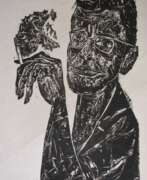

Karl-Heinz Hansen-Bahia, born in 1915 in Hamburg, Germany, was a multi-faceted artist whose work spanned various mediums, including woodblock prints, painting, sculpture, and filmmaking. His artistic journey began in earnest after World War II, with his first woodcut created in 1946. His early work, heavily influenced by the renowned artist Dürer, focused on religious scenes, showcasing his intricate and expressive style.
In 1949, Hansen-Bahia emigrated to Brazil, a move that profoundly influenced his artistic style and career. He taught art in São Paulo and later moved to Salvador Bahia, where his first exhibitions in the country were held. His work during this period began to reflect more of his adopted country's influence than his German origins, leading to a distinctive style that contributed to his prominence as a post-war German artist.
Hansen-Bahia's connection to Germany remained strong despite his move to Brazil. He returned briefly to Germany but later accepted a professorship at the Art Academy in Addis Ababa, Ethiopia. After gaining Brazilian citizenship, he continued to exhibit his work internationally, including in Europe, Japan, and the Americas. His importance in the Brazilian art scene was significant, as he became known for his portrayals of the people and landscape of the state of Bahia.
His artistic legacy was celebrated in extensive retrospectives held in Germany in 1971-72, which were among the last before his death in Brazil in 1976. Hansen-Bahia's work is a testament to his versatility and ability to adapt and evolve his style in response to his changing environments and experiences.
To stay informed about Karl-Heinz Hansen-Bahia, collectors, auctioneers, and art experts are encouraged to sign up for updates. These updates will provide information about new product sales and auction events related to Hansen-Bahia's art.
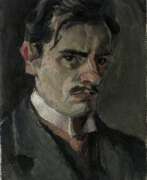

Bernhard Hasler was a German modernist painter. He was known for his expressionist paintings, especially portraits and nudes.
Hasler's work is characterized by the use of bold colours and thick, expressive strokes. He often painted portraits of friends and family. His work is marked by an emotional intensity and an exploration of the human condition.
Hasler's work can be found in many public and private collections, including the National Gallery in Berlin and the Museum of Modern Art in New York. He is considered one of the leading expressionist artists of his generation in Germany.


Stephan Heggelke is a German artist who lives and works in Hamburg and Hitzacker.
Stephan Heggelke has a serious passion for Japan and its culture, which continues to have an ongoing influence on contemporary art.
He creates decorative portraits of enchantingly beautiful women, the Japanese geisha.


Veit Hofmann, born in 1944, is a distinguished German artist, renowned for his printmaking and painting. His artistic journey began with an apprenticeship as a printer, followed by studies at the Academy of Fine Arts in Dresden from 1967 to 1972, where he was mentored by Professors Gerhard Kettner and Herbert Kunze. Post-graduation, Hofmann embarked on a freelance career, forging close relationships with fellow artists Max Uhlig, Helge Leiberg, and Stefan Plenkers.
Hofmann's work is characterized by its vibrant colors and dynamic compositions, often oscillating between abstraction and figuration. His artistic repertoire includes a significant number of solo exhibitions and contributions to various group shows, notably participating in the Kunstausstellungen der DDR in 1982/1983 and 1987/1988.
Throughout his career, Hofmann has displayed his art in numerous galleries and exhibitions, including at the Museu National in Brasilia with "Horizontbeobachter" and the Neue Sächsische Galerie in Chemnitz with "Luftreise." These exhibitions highlight his versatility and the international recognition of his work.
For collectors, auctioneers, and experts in art and antiques, Hofmann's creations offer a unique blend of traditional techniques and contemporary expression. His pieces not only represent an essential part of German postwar and contemporary art but also provide insights into the cultural and artistic movements of the time.
For those interested in the evolving world of art and the works of Veit Hofmann, staying updated with the latest exhibitions and sales is crucial. Subscribing for updates ensures that enthusiasts and professionals alike don't miss out on new opportunities related to this influential artist.
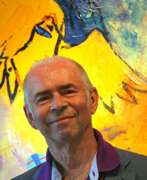

Adi Holzer is an Austrian visual artist, illustrator, draughtsman, painter, graphic artist, glass painter and sculptor of bronze sculptures and glass sculptures. He works alternately in his studios in Værløse in Denmark and Winklern in Austria. In Austria he is a member of the Carinthian Art Association.
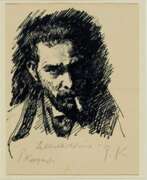

Paul Kayser was a German painter and graphic artist. After training as a painter-decorator, Kayser attended the Schools of Applied Art in Munich and Dresden.
Paul Kayser was a founding member of the Hamburg Artists' Club 1897 and the Hamburg Secession, and a member of the Hamburg Artists' Association and the Altona Artists' Association. His style was decisively influenced by Albert Marquet, whom Kaiser met in 1909.
In 1937, Kaiser's still life was confiscated from the museum in Husum as part of the Nazi "Degenerate Art" campaign.
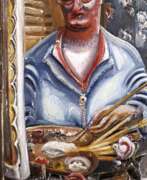

Paul Kleinschmidt was a German painter, graphic artist, engraver, and draftsman.
He studied at the Berlin Academy and at the Academy in Munich, where he studied the techniques of lithography and etching. Kleinschmidt created many etchings and lithographs in the modernist style and is also known for genre images of people having fun in restaurants.


Käthe Kollwitz (born as Schmidt) was a German artist who worked with painting, printmaking (including etching, lithography and woodcuts) and sculpture. Her most famous art cycles, including The Weavers and The Peasant War, depict the effects of poverty, hunger and war on the working class. Despite the realism of her early works, her art is now more closely associated with Expressionism. Kollwitz was the first woman not only to be elected to the Prussian Academy of Arts but also to receive honorary professor status.
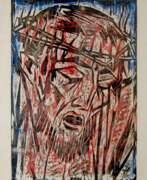

Otto Lange was a German Expressionist painter and graphic artist.
Lange was arrested by the National Socialists in 1933, and lost his professorship. He then worked as a freelance artist in Dresden. In 1938, two of his paintings were shown at the Munich Degenerate Art Exhibition.
Lange produced an extensive body of printed graphic work; his subjects ranged from religious representations to still lifes to book illustrations. His woodcuts differed from those of other expressionists, as Lange mainly used an elaborate technique of colour printing. Most of the time he did not print his work with a press or use a brayer, but instead made hand rubbings after he had inked the printing block directly with a brush.
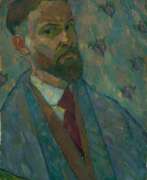

Walter Ophey was a German artist. He was known for his modernist paintings, which often depicted landscapes and still-life scenes.
Ophey studied at the Academy of Fine Arts in Düsseldorf. His early work was influenced by Impressionism, but he later became associated with the Expressionist movement.
In 1909 Ophey, together with some other Düsseldorf artists, formed the artistic group the Special Union (Sonderbund). The first chairman of the Special Union was the well-known German philanthropist and collector Carl Ernst Osthaus. In the following years this group became one of the most powerful avant-garde art movements in Germany.
Ophey's paintings are characterized by their bright colors and bold, simplified forms. He often depicted rural landscapes and still-life scenes, infusing them with a sense of emotional intensity. He was also known for his use of color, which he used to convey mood and atmosphere.
Ophey's work was exhibited extensively during his lifetime, including at the Berlin Secession and the Salon d'Automne in Paris. Despite his relatively short career, he was recognized as an important figure in the development of modernist painting in Germany.
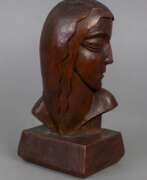

Karl Opfermann, a German sculptor and graphic artist born in 1891 in Rødding (now Denmark), carved a niche for himself in the realms of art and culture. His initial training as an ornament creator led him to the influential circles of Hamburg and Berlin, where he honed his artistic skills under the guidance of Heinz Wedding, Fritz Heit, and Richard Luksch. Opfermann's artistic journey was deeply intertwined with notable groups like the "Hamburgische Sezession" and the "Novembergruppe" in Berlin, where he played a pivotal role in shaping the local sculptural landscape from 1919 to 1933.
Tragically, Karl Opfermann's works became a target during the "Entartete Kunst" (Degenerate Art) action in 1937 by the Nazis, leading to their removal and destruction from German museums. A significant portion of his oeuvre was further lost in a bombing in 1943, which destroyed his studio in Hamburg. Despite these challenges, Opfermann's legacy persists, with efforts to reconstruct his life and works focusing on the years before 1943, the period before the destruction wrought by the Nazis and World War II.
Karl Opfermann's artistic expression was rooted in German Expressionism, a movement born out of resistance and reaction, emphasizing emotion and individual experience. His works, spanning various mediums including wood, stone, and ceramics, reflect a profound emotional depth and a unique exploration of human form and expression.
For collectors and experts in art and antiques, Karl Opfermann's work offers a compelling glimpse into the turbulent yet artistically rich period of early 20th-century Germany. His sculptures and graphic art, held in various collections throughout Germany, including Hamburg and Flensburg, stand as a testament to his enduring impact on German Expressionism.
To delve deeper into the world of Karl Opfermann and stay informed about new sales or auction events related to his work, consider signing up for updates. This subscription is an opportunity to explore and appreciate the profound legacy of this influential artist.


Lisel Oppel, actually Anna Amalie Elisabeth Oppel, was a German painter and ceramist who remains to this day one of the most memorable members of the Worpswede artist colony. From 1917 she studied painting at the Academy of Fine Arts in Munich with Richard Riemerschmid and Hermann Gröber.
Liesel Oppel painted simple paintings with great joy and colourfulness; mainly portraits, people at work and on holidays, less often pure landscapes. One of Oppel's special pictorial themes was children's pastimes in the countryside, in which she adopted and extended the motifs of the early Worpswede artists. Most of her work was created in the 1950s. She continued her expressive painting style.
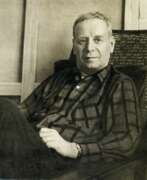

Yuri Ivanovich Pimenov (Russian: Юрий Иванович Пименов) was a distinguished Russian and Soviet painter, renowned for his pivotal role in the "lyrical Thaw" movement within Soviet art. Born in Moscow in 1903, Pimenov emerged as a vital figure in the realm of Soviet impressionism, a title he embraced despite the political and artistic shifts of his time. His unique blend of realism and impressionism, often termed "realistic impressionism," showcased his versatility and defiance against abandoning his creative principles.
Pimenov's journey in the arts was marked by his participation in the OST group and later the "Isobrigade," reflecting his adaptation and response to the evolving Soviet art scene. Despite facing challenges, including a significant psychological crisis in 1931, Pimenov's resilience and dedication to art remained unwavering. His works from this period, characterized by a rose-colored palette and an optimistic view of Moscow, highlight his evolution as an artist and his ability to portray the Soviet reality through a unique lens.
Among Pimenov's notable contributions to Soviet art are masterpieces like "Wedding on Tomorrow Street," "Lyrical Housewarming," and "Japanese Girl Kyoko," each reflecting various facets of Soviet life and Pimenov's personal experiences. These works, celebrated for their vibrant storytelling and intricate details, have solidified Pimenov's legacy as a master of Soviet impressionism.
Pimenov's influence extended beyond the canvas, as he engaged deeply with the world of theater and film, designing sets and posters that further showcased his artistic versatility. His travels abroad, particularly to Japan, enriched his perspective and influenced his later works, demonstrating his global appeal and the universal resonance of his art.
For art collectors and experts, Pimenov's oeuvre represents a unique investment in the history and evolution of Soviet art. His works, a blend of political narrative and personal expression, offer a profound insight into the era of the Soviet Union, making them invaluable pieces for any collection.
To stay updated on new product sales and auction events related to Yuri Ivanovich Pimenov, sign up for our updates. This subscription is your gateway to exploring the rich legacy and enduring impact of Pimenov's art on the Soviet and global art scenes.
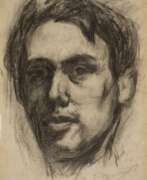

Johannes Siegfried Richter (German: Johannes Siegfried Richter) or Hans Richter was a German painter, graphic artist, avant-garde film director and film theorist.
Hans Richter studied at the Berlin Academy of Fine Arts, then at the Weimar Academy. He was close to the expressionist group Sturm, influenced by cubism. He had his first solo exhibition in Munich in 1916. From 1916 to 1918, he was a member of the "Dada" group in Zurich. In 1922, came to Berlin. Made several films, where he tried to convey rhythm and movement by abstract means. In 1933 the Nazis ransacked Richter's studio in Berlin, confiscating or destroying his work. He was stripped of his German citizenship and called a "degenerate" artist and a "cultural Bolshevik". In 1940 he moved to the United States. Taught film in New York, continued his film experiments.


Hermann Scherer was a Swiss expressionist painter, sculptor, and printmaker. He is considered one of the most important expressionists in Switzerland.
Familiarity with new movements in art prompts the young sculptor to take up painting at the same time. Scherer switches from stone carving to painting and creates an impressive series of brightly colored works in keeping with German Expressionist trends. Inspired by the paintings of Edvard Munch, but above all by his collaboration with Ernst Ludwig Kirchner, Scherer developed an expressive formal language and painted in strong, vivid colors. The themes of his paintings speak of inner conflicts, love and passion, fear and loneliness. In addition to paintings, Scherer created many woodcuts.
In the mid-1920s, together with Paul Kamenisch and Albert Müller, Scherer founded the Rot-Blau group, which made a major contribution to Swiss expressionism.
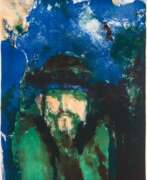

Shmuel Shapiro is an American painter and graphic artist.
The son of Jewish immigrants who came to America from Russia at the turn of the century, Shmuel Shapiro was drafted into the army during World War II and served in Europe before returning to paint again. Shapiro lived alternately in the USA, Germany, France, Switzerland and participated in exhibitions.
Shapiro's style of painting absorbed German and American expressionism, and the European influence of informal, abstract and expressionist styles is also recognizable.
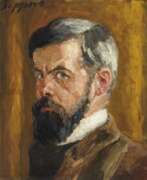

Georg Tappert was a German expressionist painter.
Tappert studied at the Academy of Fine Arts in Berlin and later joined the Berlin Secession, a group of artists who sought to break away from traditional academic art. His early work was influenced by the Art Nouveau movement, but he later became associated with German Expressionism.
Tappert's paintings are characterized by their vivid colors and expressive brushstrokes, which conveyed a sense of emotional intensity. He often depicted scenes of modern urban life, such as cafés, streets, and theaters, as well as portraits and still-life compositions. He also produced a significant body of graphic work, including woodcuts and lithographs.
Tappert's work was exhibited extensively during his lifetime, including at the Berlin Secession and the Städtische Galerie in Munich. He was also awarded numerous honors and awards for his work, including the Villa Massimo Prize in Rome in 1911 and the Grand Cross of the Order of Merit of the Federal Republic of Germany in 1955.


Carl Emil Uphoff (German: Carl Emil Uphoff) was a German painter and writer who worked in the artists' colony of Worpswede. He first studied at the Folkwang-Kreis under Christian Rolfs and then on study trips to Belgium, Holland and France. In Paris he was promoted by Henri Matisse.
Karl Emil Uphoff was a member of the NSDAP and the Nazi community Kraft durch Freude.
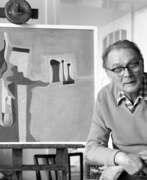

Erich Wegner was a German artist. His work was heavily influenced by the expressionist movement, and he often depicted scenes of daily life in a bold and expressive style.
Wegner's paintings were characterized by their thick brushstrokes and vibrant colors, which conveyed a sense of energy and movement. He often painted urban scenes, such as street scenes and cityscapes, and also produced numerous portraits and still-life compositions.
During the Nazi regime in Germany, Wegner's work was deemed "degenerate" and he was forbidden to exhibit his art. Despite this, he continued to work in secret and later resumed exhibiting his work after the war.
Today, Wegner's work is held in collections around the world, including the National Gallery in Berlin and the Museum of Modern Art in New York.
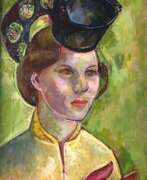

Karoline Wittmann, née Karoline Erlacher, was a German artist who painted in the style of expressive realism. Inspired by exhibitions at the Glaspalast in Munich, she attended the Moritz Heymann School of Painting in the late 1920s. She studied graphics and nude painting. From 1945 she worked as a free-lance artist. Her role models were Vincent van Gogh, Paul Cézanne and Lovis Corinth.
Caroline Wittmann was a member of the New Munich Artists' Co-operative, the Professional Association of Fine Arts / BBK-Munich and Gedok. From 1949 to 1960 she exhibited at the annual Great Art Exhibition at the House of Art. At the 1978 Great Art Exhibition at the Haus der Kunst in Munich, two landscape paintings were exhibited in her memory at the Neue Münchner Künstlergenossenschaft and sold in the first week. Caroline Wittmann sold three sunflower paintings during her lifetime. Caroline Wittmann's life's work was only published posthumously in 1996 by Matthias Arnold and in 2010 by Ingrid von der Dollen. It includes about 340 oil paintings, watercolours and etchings listed in the catalogue.
